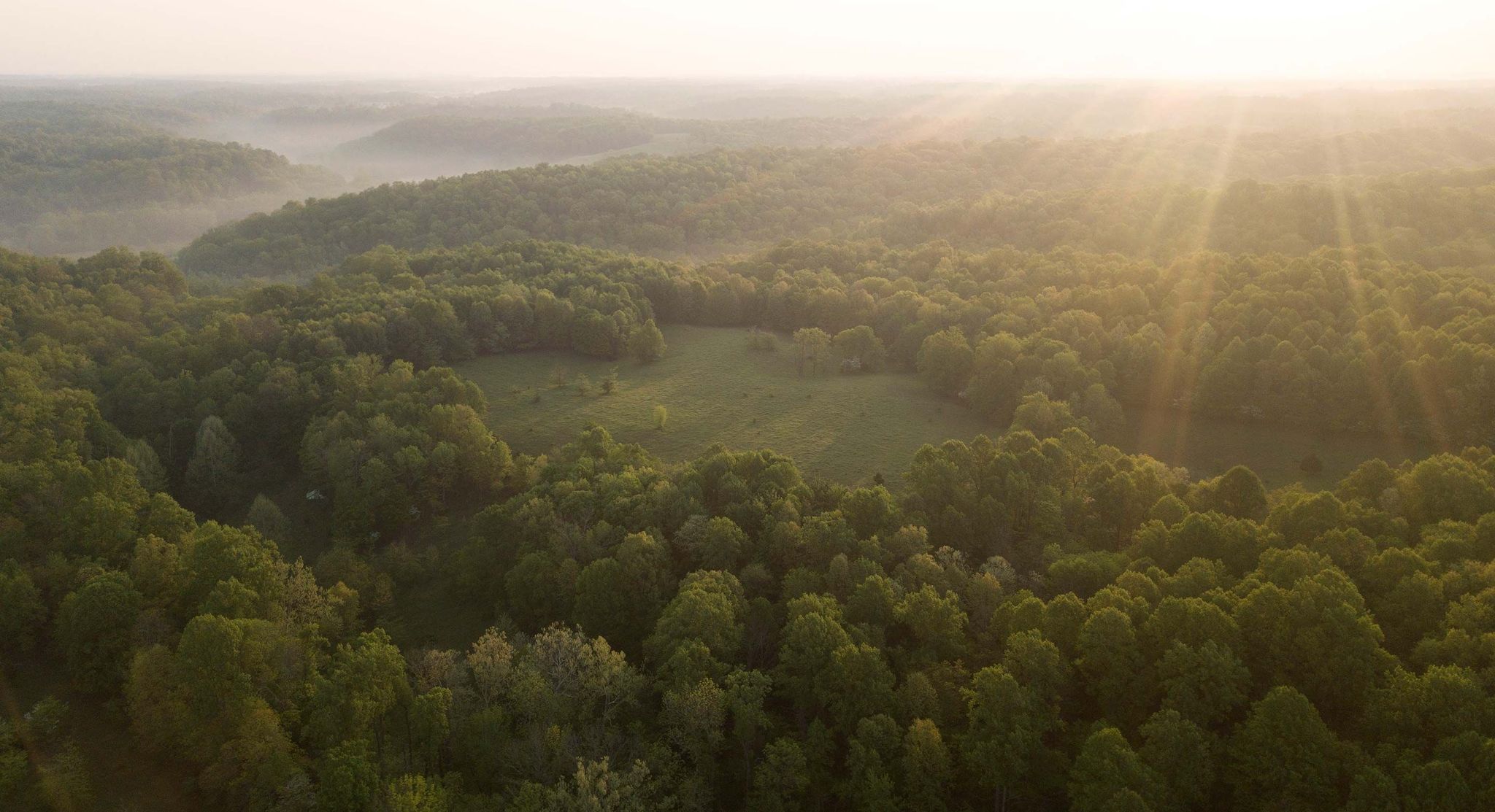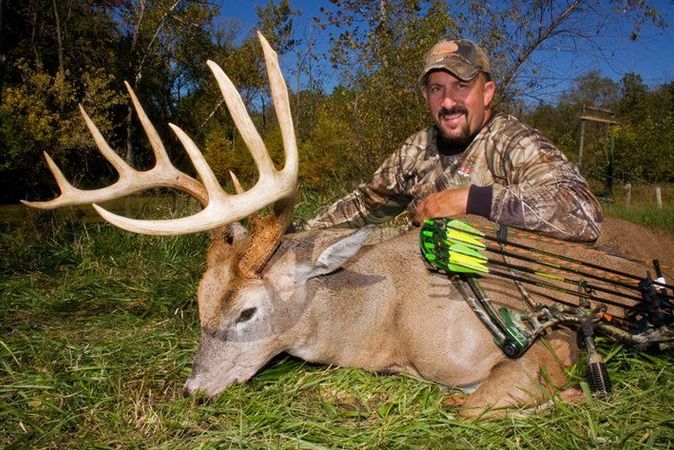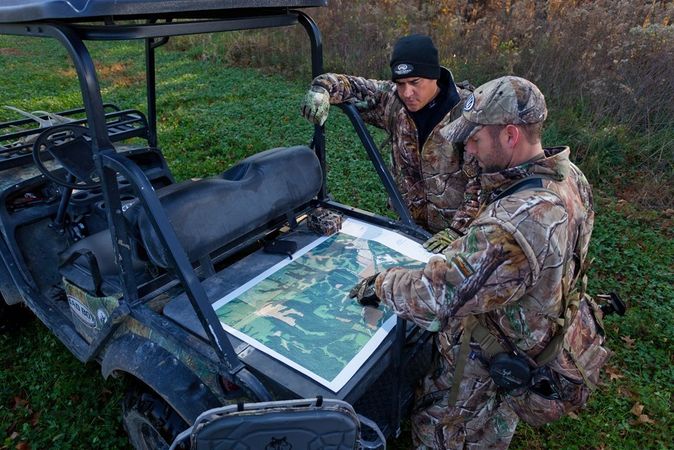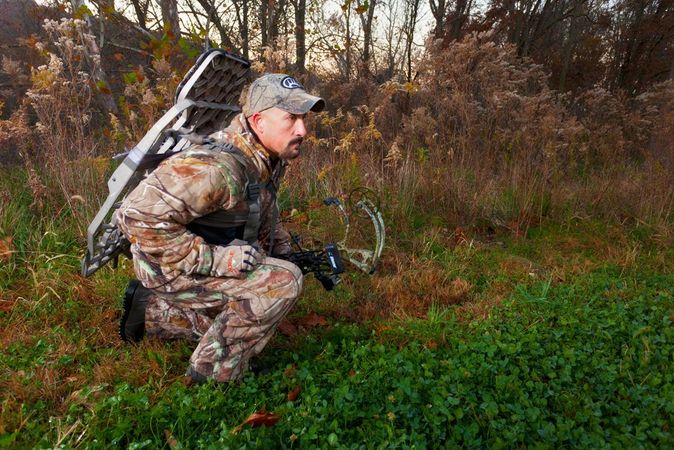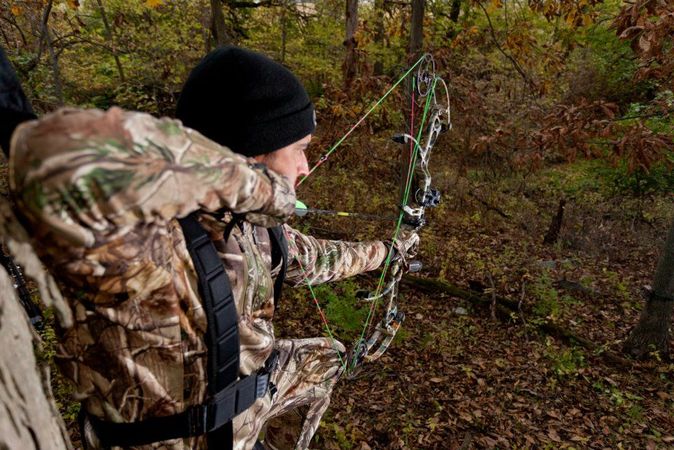Ohio land specialist, Tyler Viars, knows the value of hunting land, from an investment and recreational perspective to a much more personal connection with nature.
Viars wants everyone to know that they have the ability to have healthy, delicious meals that come from nature. Everyone has heard of the Farm to Table movement, and Tyler started the Forest to Fork movement. With access to beautiful and lean wild game, fresh fruits and vegetables, and all other manner of food from nature,Tyler wants everyone to take advantage of what nature has to offer.
You may remember Viars from season 5 of MasterChef on Fox. He was the guy clad in Realtree camo serving up wild game dishes to please the judges.
“One of the things I love most as a cook and the message I spread given the platform I have been given to stand on is that food is emotional to us all,” said Viars. “When you eat and you’re all sitting around the table and bonding, especially after a hunt, it’s emotional. And what completes the experience is harvesting the animal yourself, processing it yourself and understanding, ‘Wow, I’ve watched this animal take its last breath and now it’s going to feed my family. It’s going to provide for me.’ There’s nothing more emotional than that.”
Merging his love for hunting and cooking, Viars has some tips for serving great dishes that goes beyond picking up a roast from the grocery store.
The Shot
Adrenaline and testosterone are two hormones that can lead to “gamey” venison. More on testosterone later, but limiting the build up of adrenaline and lactic acid comes down to making sure the animal hits the grounds as soon as possible after a shot.
“A quick kill is every ethical hunter’s goal,” said Viars. “We don’t want the animal to suffer, and a by-product of a quick kill is better tasting venison. If you happen to make an marginal shot, don’t push the deer, because the more an animal runs, the more adrenaline produced and the more the meat gets tainted.”
Field Dressing
After the shot, the focus is cooling the meat. That means removing organs that can’t be used…but hold on; hunters may be tossing out some great tasting parts of the deer.
Viars’ philosophy is “rooter to tooter,” a phrase he has coined.
“I believe the animal died for us, whether it be a whitetail deer, a rabbit, hog, or a plant, it died for us,” said Viars. “It gave its life for our nourishment. Out of respect for it, we should utilize as much as we can. A lot of cuts that most people toss out are underutilized and underrated quite frankly.”
Viars keeps the tongue, kidneys, liver and heart.
“The heart is one the richest pieces of meat on any animal,” said Viars. “It’s really no different than any other muscle on a deer, except it pumps. It keeps the animal alive and is rich with blood. You grind that up with some beef suet (80-20 ratio), serve as a burger, and you’ll make someone turn inside out. It’s awesome.”
Viars also loves pâté, a French originated dish usually made from the liver of animals. Essentially, you remove the membrane from the liver, cube it and blend it with whiskey or brandy, along with garlic, onion, rosemary, and thyme or other any other preferred herbs. Cook it with a tablespoon of butter and 3-4 slices of bacon and then puree it in a food processor. Bring that all together, serve it on crackers and it will change your lack of liver love!
“It’s all about how it’s put in front of you,” said Viars. “People have a huge misconception. It’s kind of like handing a piece of raw broccoli to someone and asking him or her to try to it for the first time. Their response is, ‘No, I don’t like broccoli.’ But if I smother it with cheese and crackers and serve it to them in a casserole, his or her mind might change.
“If you go to a butcher, watch what they do with heart and liver of almost any animal. It finds his or her freezer. They know what’s good.”
Aging
Dry aging venison breaks downs collagen, and thus make the meat tenderer. Water content is also removed. Aging is one of Viars’ favorite things to do, but it’s also weather permitting.
“Unfortunately for me and for a lot of people who do deer processing at home, we don’t have an aging box or a storage facility large enough,” said Viars.
But what you can do is play the weather.
“Some of the best steak houses in the world are dry aging beef for 30 days plus, Viars said. “So, you definitely want to do that if the weather or storage facility allows.
“It’s mid-October and we are getting there. The first week of November is usually right, but you want the outside temperatures to be exactly like a refrigerator except higher humidity levels. And most places across the mid-west and the south have high humidity levels this time of year.
“When the weather lets me keep the temperature between 33 to 40 degrees, I will let a deer hang for two weeks with the hide off. If the weather isn’t right, I will quarter the deer up the best I can and store it in an outdoor fridge for as long as I can.”
Butcher it Yourself or Take it to a Processor?
This one is up to you, but according to Viars’, if you are a foodie who kills a deer each year, why not learn?
“I have champagne taste with a beer budget so, anytime I can save money and be cost effective is an additional bonus. It’s not that I don’t like processors. I love them because I can learn from them, but if I am not 100% confident in the butcher I am going to, those horror stories that you heard about not getting your actual deer back start to pop up in my mind. If I do it myself I know it’s my deer.”
That point of trusting a processor deserves reiterating. You can usually tell by the appearance. Whether they work out of their home or have a storefront, inspect the operation. How clean is it? What is their method of keeping track of an individual deer as it goes through the process? If you see any red flags, ask if you watch them butcher it yourself. If they refuse, move on.
Deer processors are important in the realm of deer hunting, and we don’t mean to paint a picture that all are sketchy, but meat and poor handling do not mix. If you use a processor, shop around for a good one.
Or, do it yourself.
“A whitetail deer is not much different than a cow. One is 1,500 pounds and one is not. The cuts are similar,”said Viars. “I like to process myself because each time I learn a little bit more. Just like any skill, like being a cook, when someone asks how to do something or I’m getting a chance to learn, I want to get my hands dirty. Ask the butcher if you can watch, and it’s pretty fascinating how quickly, efficiently and effective they do it.”
Sidebar:
DIY Deer Processing Gear Guide from WhitetailProperties
Storing the Meat
Whether it’s the prime cuts or trimmings that will eventually become ground venison, Viars freezes everything even if he plans on eating it right away to stop bacteria growth.
“I learned about a particular parasite called Toxoplasma gondii from the President of QDMA at a Whitetail Properties field meeting.”
Toxoplasma gondii caused the disease of Toxoplasmosis. According to the U.S. Department of Health & Human Services, more than 60 million people in the United States have the parasite. Most of them don't get sick. But the parasite causes serious problems for some people. These include people with weak immune systems and babies whose mothers become infected for the first time during pregnancy.
The toxoplasma parasite lives in the flesh of many animals, from mice to cattle, and infects other animals that eat them, like cats and humans.
Freezing the meat to -4 degrees(F) for two days is one way to prevent illness.
And of course, freezing the meat allows you to enjoy it for months after the kill. Viars recommends a quality vacuum sealer (See Sidebar) to preserve the meat longer – up to a year before freezer burn sets in.
The Ultimate Method of Grilling a Venison Steak
On MasterChef, Viars’ signature dish was venison backstrap, so let’s say he’s using that, but this method can work for most venison steaks.
Viars believes most cooks shoot themselves in the foot before the grill is even lit.
“DON’T BE A HERO!” said Viars. “Get a meat thermometer. The people that screw up don’t have a meat thermometer to monitor temperature.”
So that’s the first step. Here are the rest:
Pull the steak from the freezer two days before you plan on serving it and let thaw.
The next day, after it’s thawed, salt the meat liberally and refrigerate.
“This is one thing some home cooks don’t understand,” Viars said. “If they went back into a professional kitchen, they’d be like ‘oh my gosh, my arteries are going to clog.’ But salt brings out flavor.”
A few hours before grilling, pull the steak out and let it come to room temperature.
Fire up the grill (preferably, but not absolute, use a charcoal grill).
Once your coals or flame is ready, lay a cast iron skillet on the grill grate.
“Some people say, ‘Well that’s not grilling,’” said Viars. “Yeah it is. I promise you, the flavor of charcoal gets around the cast iron. If you don’t have one, get one. If you can’t buy one, borrow it from someone.”
When the skillet gets white hot, introduce fat.
Use bacon, canola, or duck fat to layer the skillet.
Throw in some herbs and seasonings.
Viars recommends scallions, garlic, and thyme to infuse the fat.
Place your steak in the skillet.
“Don’t touch it,” said Viars. “Let it sear. You want it to build a crust. The best steaks have that crust. Sear it about two, two and half minutes per side. As you cook, tilt the pan to baste it with the fat the entire time. Once the temperature reaches 125 to 130 depending on how well done you like it – I never let mine get above 125 degrees. Residual heat will carry over after cooking and will be around 130 degrees once the steak is served – pull it.
Flavor it some more.
Right when you are pulling it off the skillet, the pores are still open and asking for flavor. Baste it again with the fat/seasonings in the skillet and add some more salt.
Let it rest for five minutes.
Serve it with a Chimichurri sauce.
You can find his recipe here.
Then, enjoy. Sit around the table with your family and friends, give thanks to God for his providence, and tell the story of the hunt. Eat, drink and be merry!
Be sure to follow Tyler Viars on Twitter for more wild game cooking tips and updates on hunting land in Ohio.



